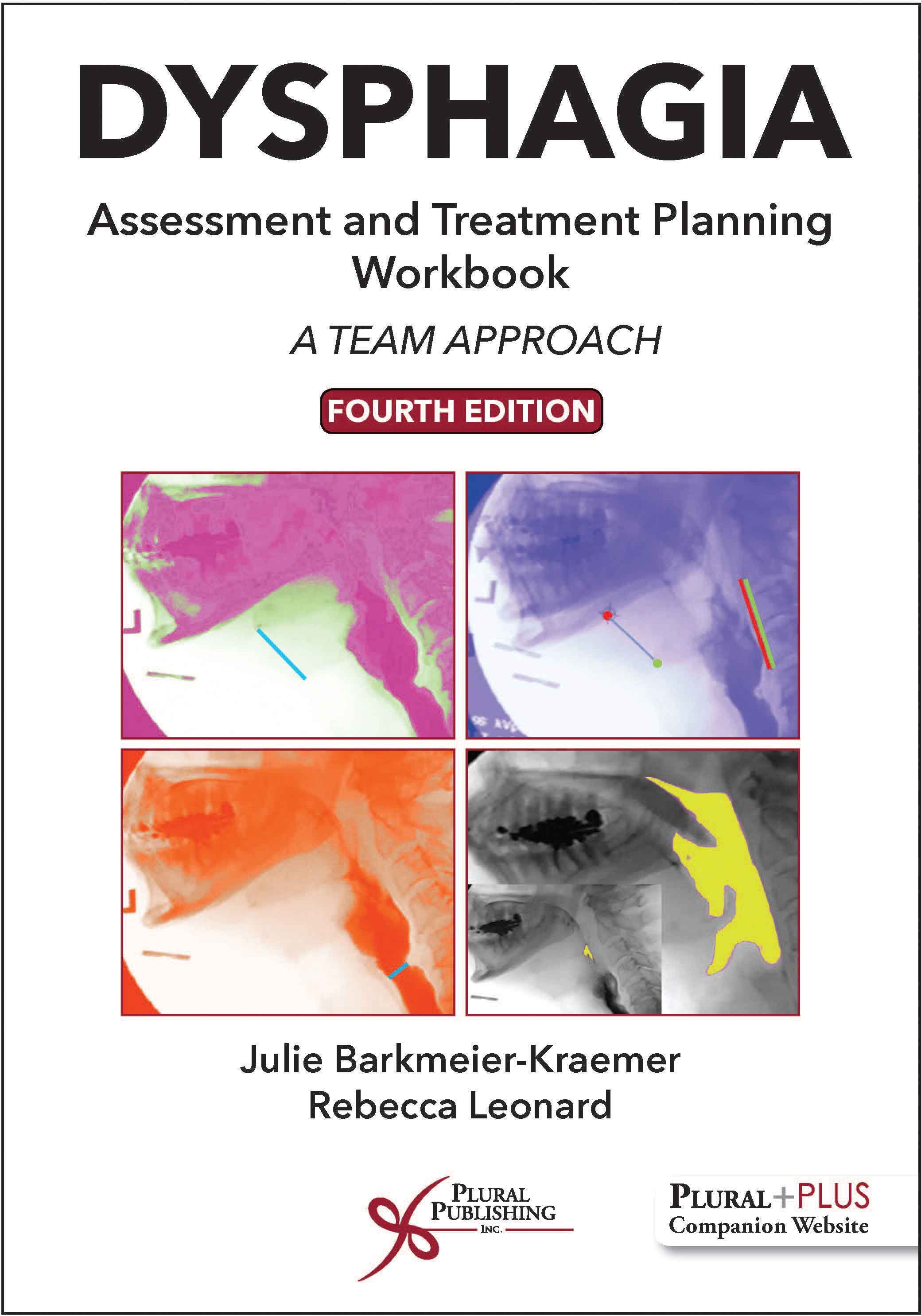
Dysphagia Assessment and Treatment Planning Workbook: A Team Approach.
Fourth Edition
Julie Barkmeier-Kraemer, Rebecca Leonard
Details: 230 pages, B&W, Spiral Bound, 8.5" x 11"
ISBN13: 978-1-63550-006-6
© 2019 | Available
Click here for the new edition.
Dysphagia Assessment and Treatment Planning Workbook: A Team Approach, Fourth Edition is designed as a companion to the textbook, Dysphagia Assessment and Treatment Planning, Fourth Edition, by Dr. Rebecca Leonard and Dr. Katherine Kendall. The fourth edition of the textbook is ideal for dysphagia courses in speech-language pathology graduate programs and has been updated with a new organizational scheme, as well as new and revised content throughout. This new edition of the workbook reflects these changes and includes a new PluralPlus companion website with multimedia content unique to the workbook, such as exam questions for instructors and case study examples for students.
Based on Dr. Julie Barkmeier-Kraemer's experience teaching and training graduate students and colleagues in the area of dysphagia, a variety of activities and questions are included in the workbook that facilitate understanding and engagement of each chapter in the associated textbook. The workbook includes quiz questions, figure labeling, case-based problem solving, application of videofluorographic and FEES measures or ratings, as well as report writing. Answers or model responses are provided at the end of the workbook for the reader's reference.
The activities and questions provided in the Dysphagia Assessment and Treatment Planning Workbook, Fourth Edition will help readers improve their understanding and implementation of clinical instruction in the area of dysphagia and can be used by students or practicing clinicians hoping to add new skills to their repertoires.
Introduction
Acknowledgments
Multimedia List
Chapter 1. Anatomy and Physiology of Deglutition Questions
Chapter 2. Head and Neck Physical Exam Questions
Chapter 3. Clinical Swallow Evaluation Questions
Chapter 4. Endoscopy in Assessing and Treating Dysphagia Questions
Chapter 5. Radiographic Evaluation of the Pharynx and Esophagus Questions
Chapter 6. Dynamic Fluoroscopic Swallow Study: Swallow Evaluation with Videofluoroscopy Questions
Chapter 7. DSS: A Systematic Approach to Analysis and Interpretation Questions
Chapter 8. Dynamic Swallow Study: Objective Measures and Normative Data in Adults Questions
Chapter 9. Other Technologies in Dysphagia Assessment Questions
Chapter 10. The Treatment Plan Questions
Chapter 11. Nursing Evaluation and Care of the Dysphagic Patient Questions
Chapter 12. Nutritional Concerns and Assessment in Dysphagia Questions
Chapter 13. Pediatric Clinical Feeding Assessment Questions
Chapter 14. Esophageal Phase Dysphagia Questions
Chapter 15. Neurogenic Dysphagia Questions
Chapter 16. Dysphagia in Head and Neck Cancer Patients Questions
Chapter 17. Laryngopharyngeal Reflux Questions
Chapter 18. Spinal Abnormalities in Dysphagia Questions
Answers to Questions
References
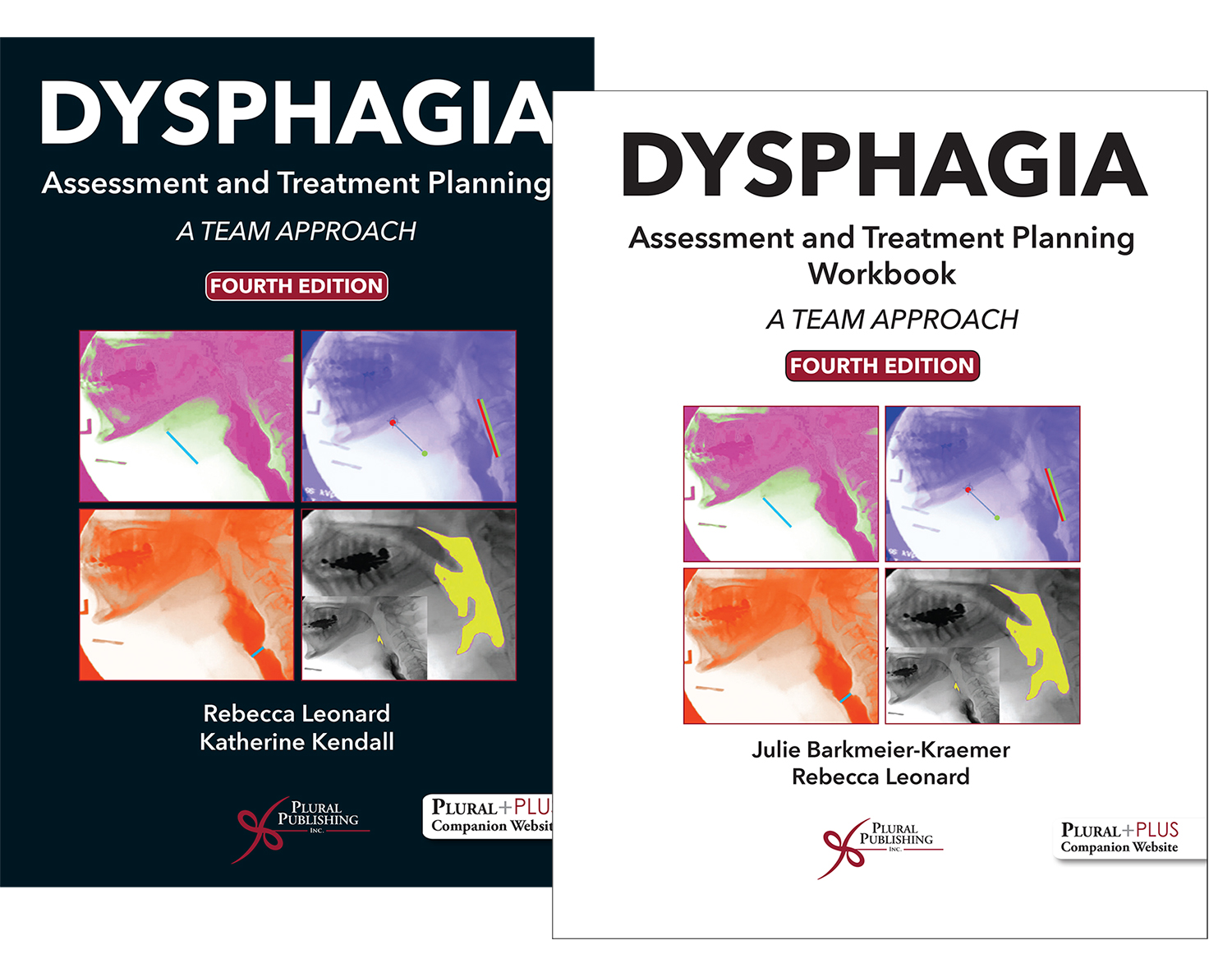
Dysphagia Assessment and Treatment Planning: A Team Approach Bundle (Textbook and Workbook).
Overview
Dysphagia Assessment and Treatment Planning: A Team Approach, Fourth Edition is an ideal resource for dysphagia courses in speech-language pathology graduate programs. The unique value of this book is its multidisciplinary approach. Too often, speech-language pathologists function clinically with insufficient interaction with, or understanding of, the roles of other professionals involved with their patients. This text incorporates information pertinent to the roles, tools, and views of a multidisciplinary dysphagia team, including physicians, speech pathologists, nurse specialists, and dietitians, who work together on a daily basis.
In this fourth edition, the organization has changed, with chapters concerned with assessment techniques coming first, and material addressing special populations comprising the latter portion of the text. This reflects what is likely a more typical approach to dysphagia in graduate courses concerned with the topic and one that complements teaching of the subject matter.
Updates to the fourth edition include:
- The treatment chapter (Chapter 10) has been updated to reflect the current status of therapeutic approaches previously considered in treating dysphagic patients.
- Chapters dealing with nursing (Chapter 11) and nutrition (Chapter 12) have been updated to incorporate the latest recommendations in nursing care and dietary considerations for patients experiencing dysphagia.
- The pediatrics chapter (Chapter 13) has been expanded to address specific problems and needs not only of infants but also the entire spectrum of childhood.
- A chapter devoted to the esophagus (Chapter 14) addresses new information on the management of esophageal disorders, including the novel double-balloon dilation of the UES and a device for manually opening the upper esophagus.
- Chapters addressing special populations, including neurogenic disease (Chapter 15) and head and neck cancer (Chapter 16), incorporate the latest information regarding dysphagia and approaches to treatment pertinent to each group.
- A brand-new addition to the book is Chapter 18, which addresses dysphagia associated with alterations to the spine as a consequence of either disease or surgery.
- A major new inclusion in the current edition are materials utilizing a new software program, called "Swallowtail," that permits the all-in-one measurement, display and storage of timing, displacement, and other measures from fluoroscopic studies.
The textbook now comes with access to a PluralPlus companion website that includes videos of patient studies that were selected to represent impairments typically observed in clinical practice (inpatient and outpatient). Other media clips illustrate each instrumental assessment technique introduced in the book (e.g., endoscopic, transnasal esophagoscopy, high-resolution manometry), performed on a variety of dysphagic patients. Additional resources for instructors include lecture slides for each chapter and an image bank.
Also available is a separate companion workbook, Dysphagia Assessment and Treatment Planning Workbook, Fourth Edition, that includes practical exercises accompanying each chapter. The exercises are designed to clarify and expand on information presented in the text and should be of interest not only to students but to practicing clinicians hoping to add new skills to their repertoires. The workbook has been thoroughly updated to reflect the new organization and content of the textbook.
Purchasers of this book receive complimentary access to supplementary materials hosted on a PluralPlus companion website.
To access the materials, log in to the website using the URL located inside the front cover of your copy of Dysphagia Assessment and Treatment Planning Workbook: A Team Approach, Fourth Edition.
STUDENTS:
To access the student materials, you must register on the companion website and log in using the access code located inside the front cover of your workbook.
INSTRUCTORS:
To access the instructor materials, you must contact Plural Publishing, Inc. to be verified as an instructor and receive your access code.
Email: instructormaterials@pluralpublishing.com
Tel: 866-758-7251 (toll free) or 858-492-1555
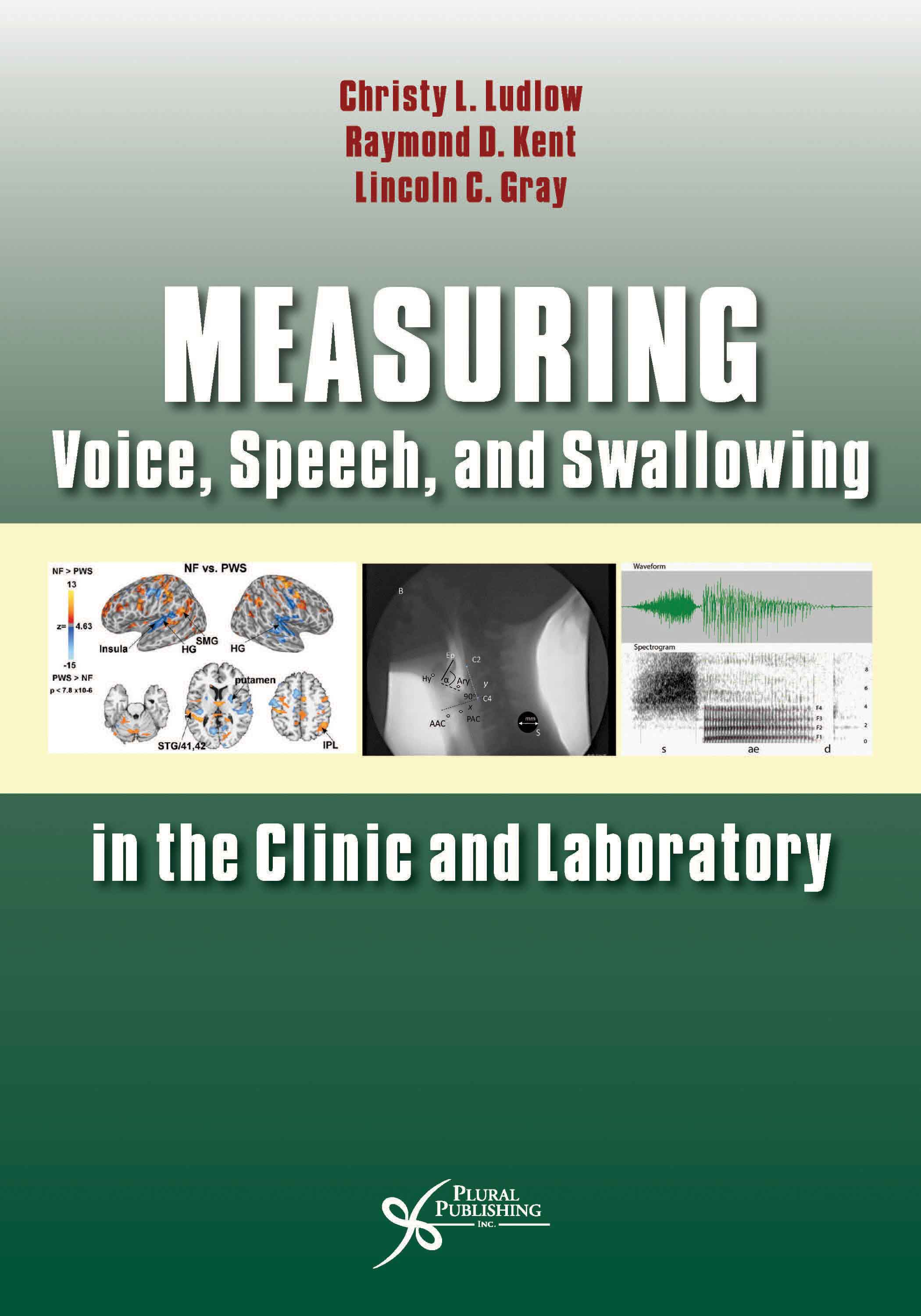
Measuring Voice, Speech, and Swallowing in the Clinic and Laboratory
First Edition
Christy L. Ludlow, Raymond D. Kent, Lincoln C. Gray
Details: 566 pages, Full Color, Spiral Bound, 7" x 10"
ISBN13: 978-1-59756-464-9
© 2018 | Available
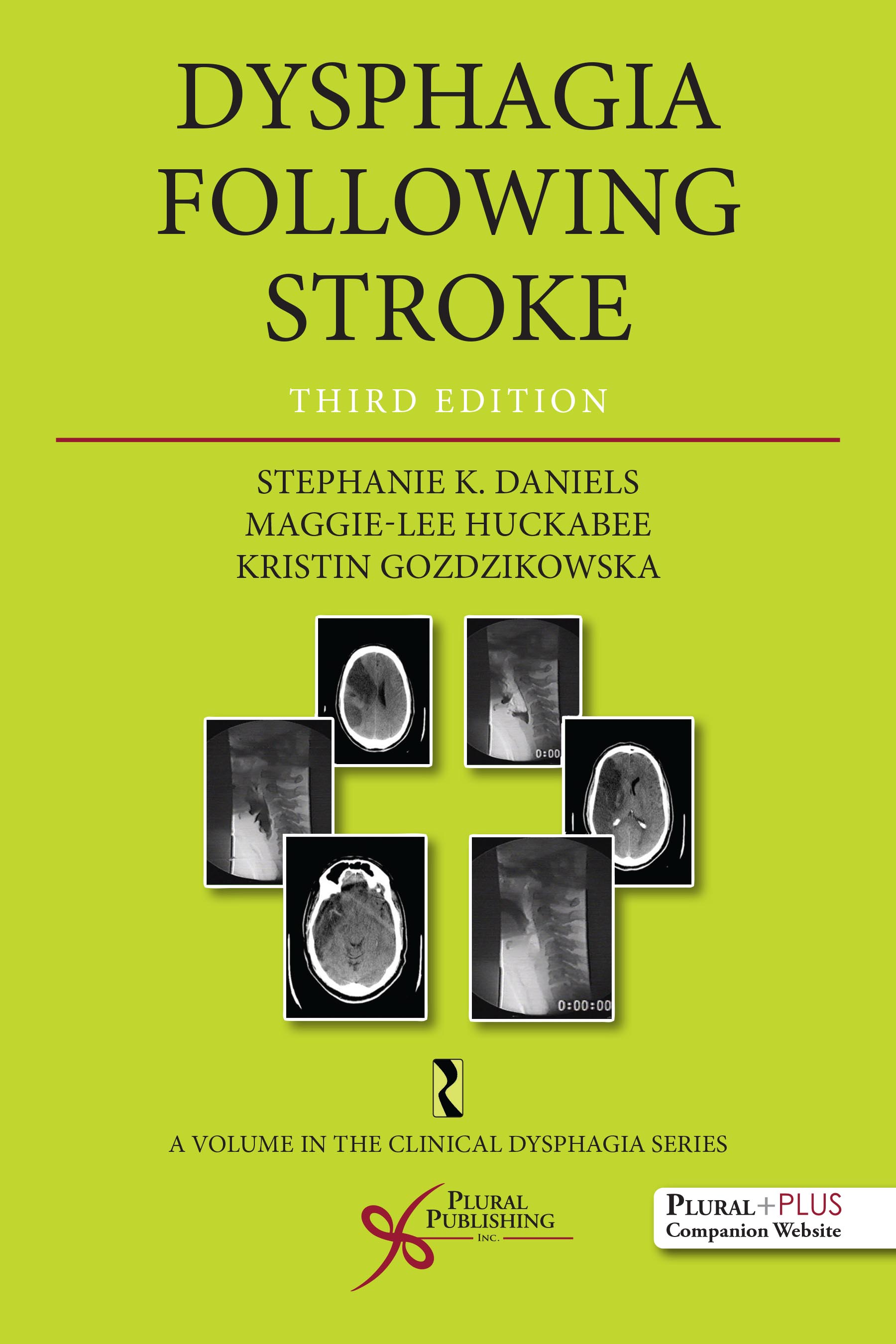
Dysphagia Following Stroke
Third Edition
Stephanie K. Daniels, Maggie-Lee Huckabee, Kristin Gozdzikowska
Details: 500 pages, B&W, Softcover, 6" x 9"
ISBN13: 978-1-63550-030-1
© 2019 | Available
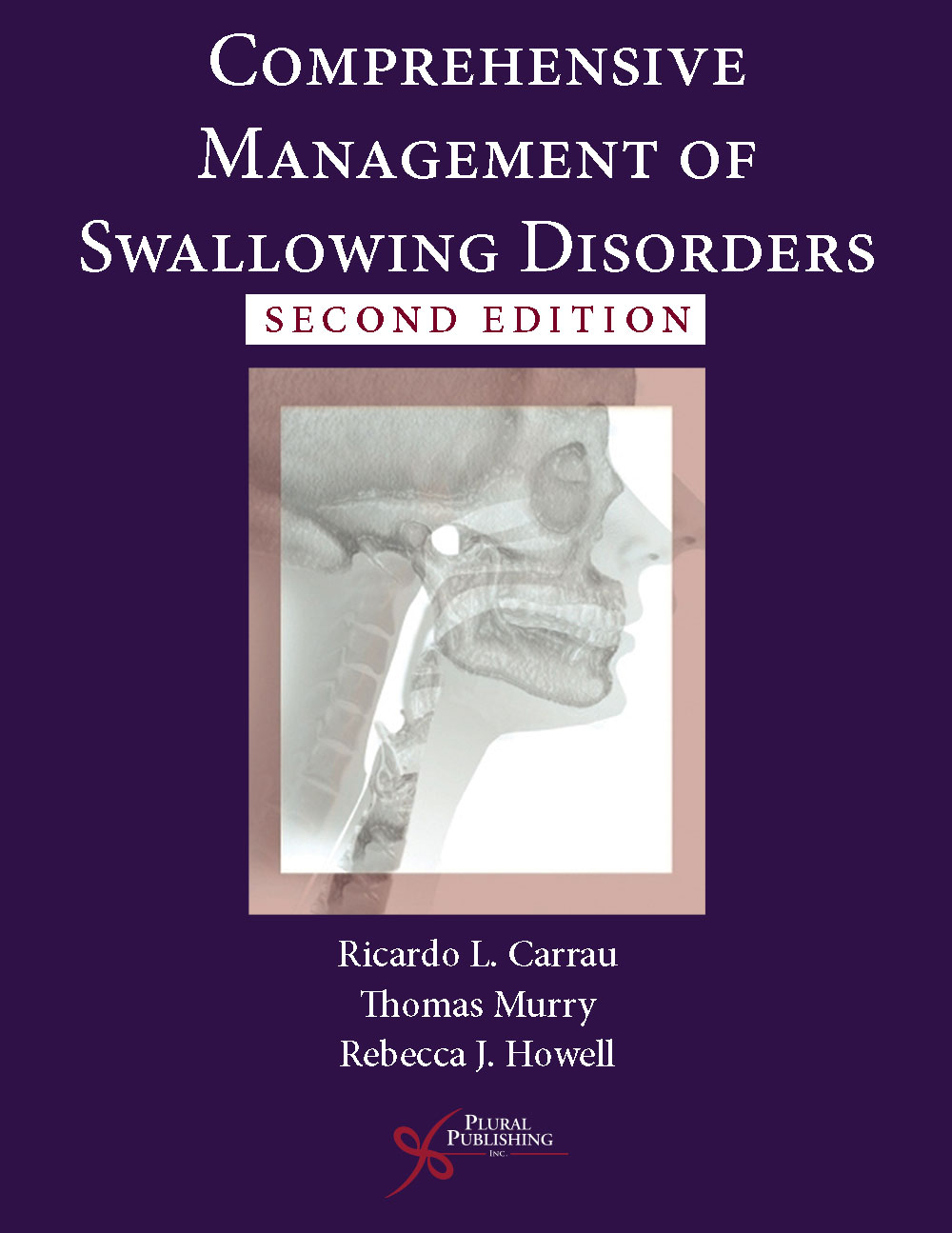
Comprehensive Management of Swallowing Disorders
Second Edition
Ricardo L. Carrau, Thomas Murry, Rebecca J. Howell
Details: 576 pages, B&W, Softcover, 8.5" x 11"
ISBN13: 978-1-59756-730-5
© 2017 | Available
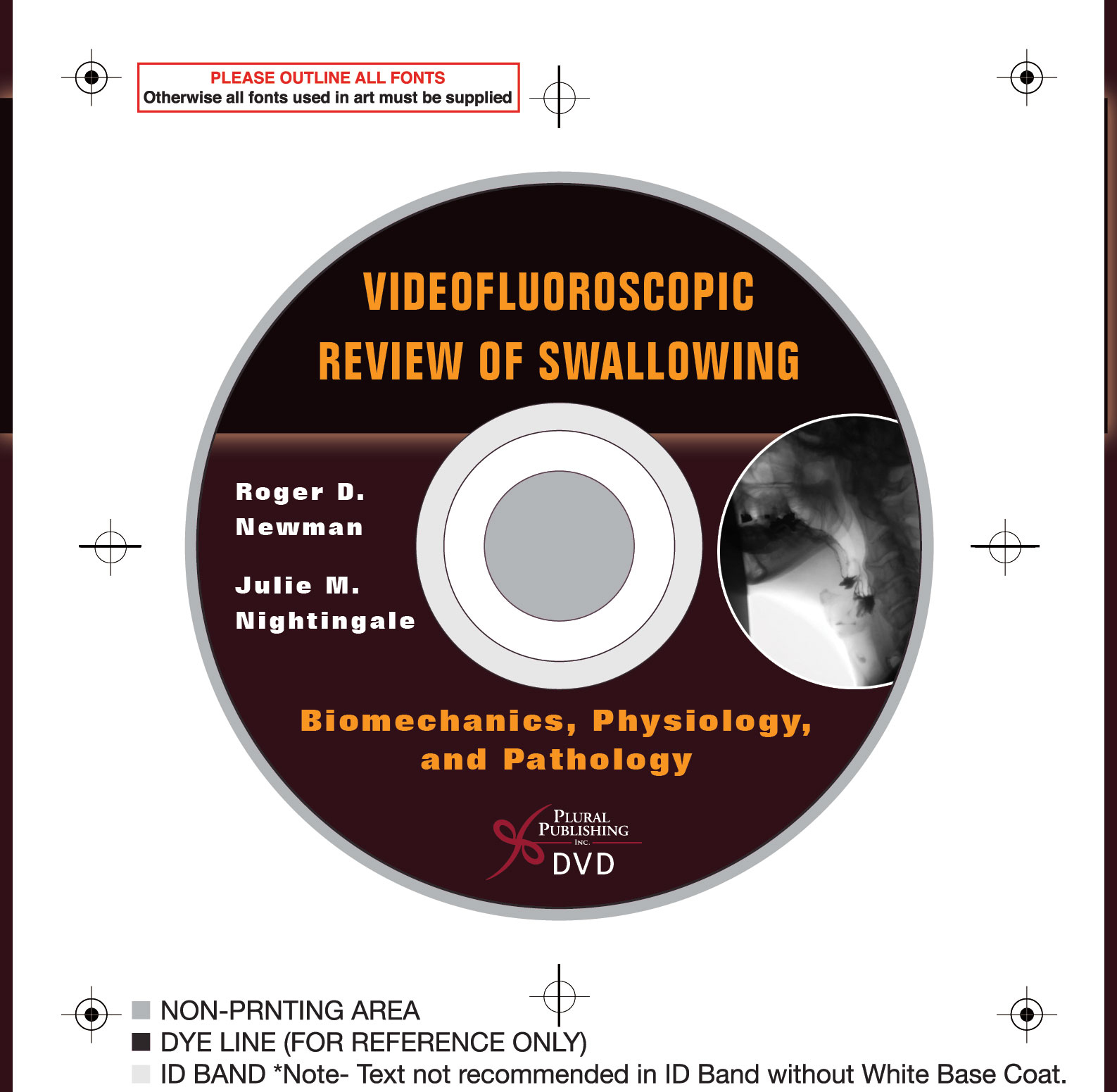
Videofluoroscopic Review of Swallowing: Biomechanics, Physiology, and Pathology
First Edition
Roger D. Newman, Julie Nightingale
Details: DVD
ISBN13: 978-1-59756-463-2
© 2012 | Available
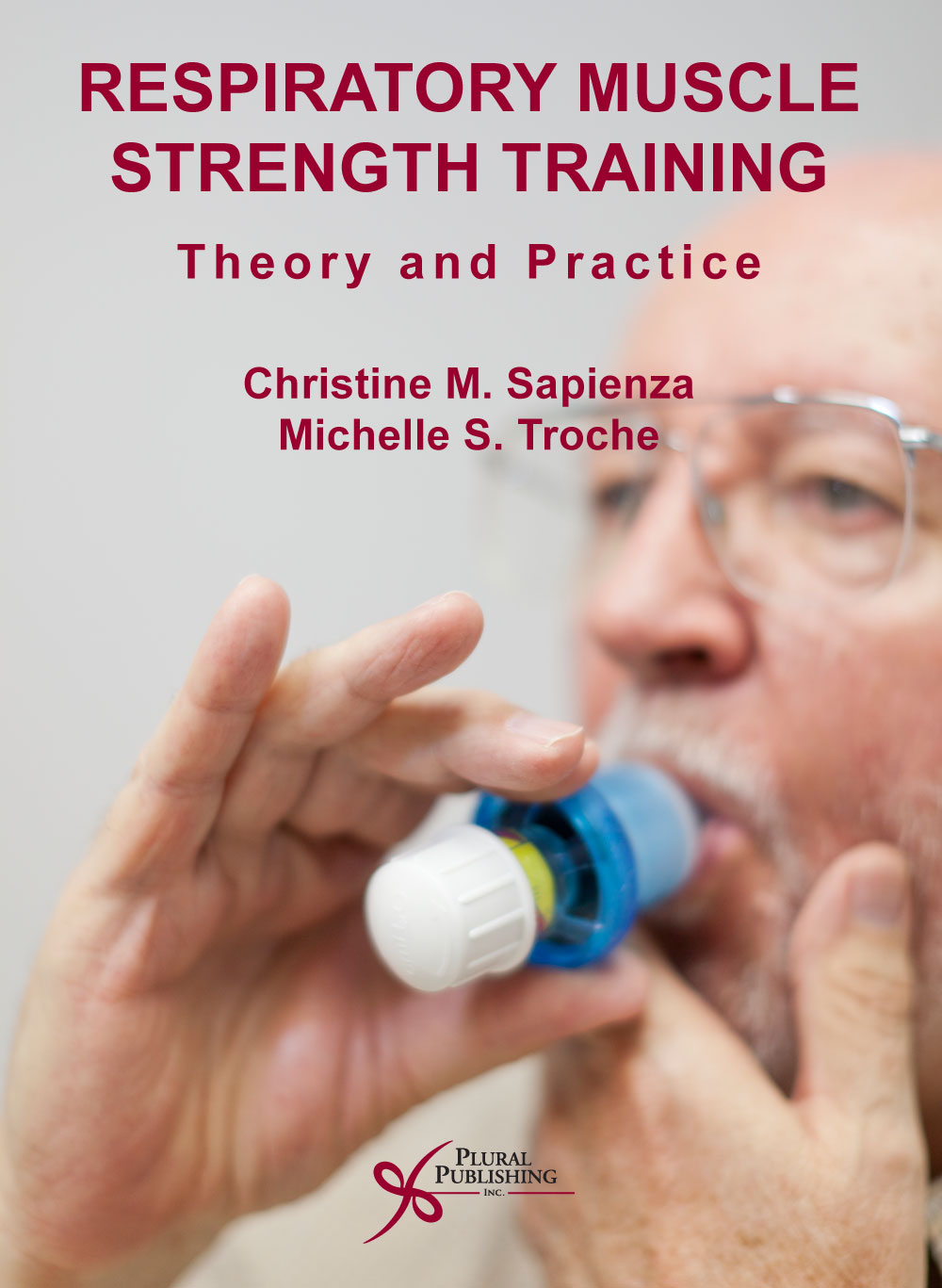
Respiratory Muscle Strength Training: Theory and Practice
First Edition
Christine Sapienza, Michelle S. Troche
Details: 87 pages, B&W, eBook
ISBN13: 978-1-59756-626-1
© 2012 | Available
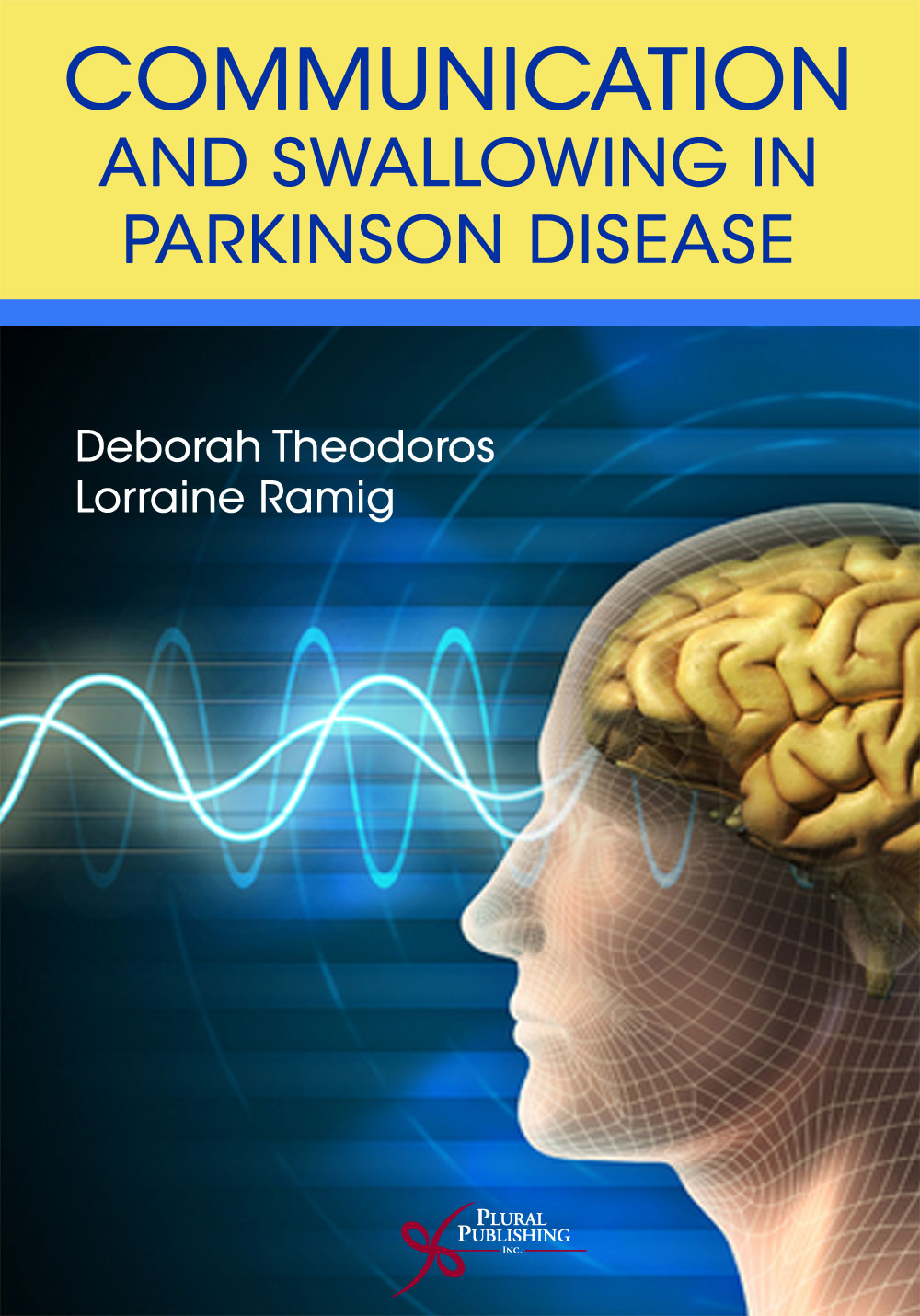
Communication and Swallowing in Parkinson Disease
First Edition
Deborah Theodoros, Lorraine Ramig
Details: 256 pages, B&W, Softcover, 7" x 10"
ISBN13: 978-1-59756-205-8
© 2011 | Available
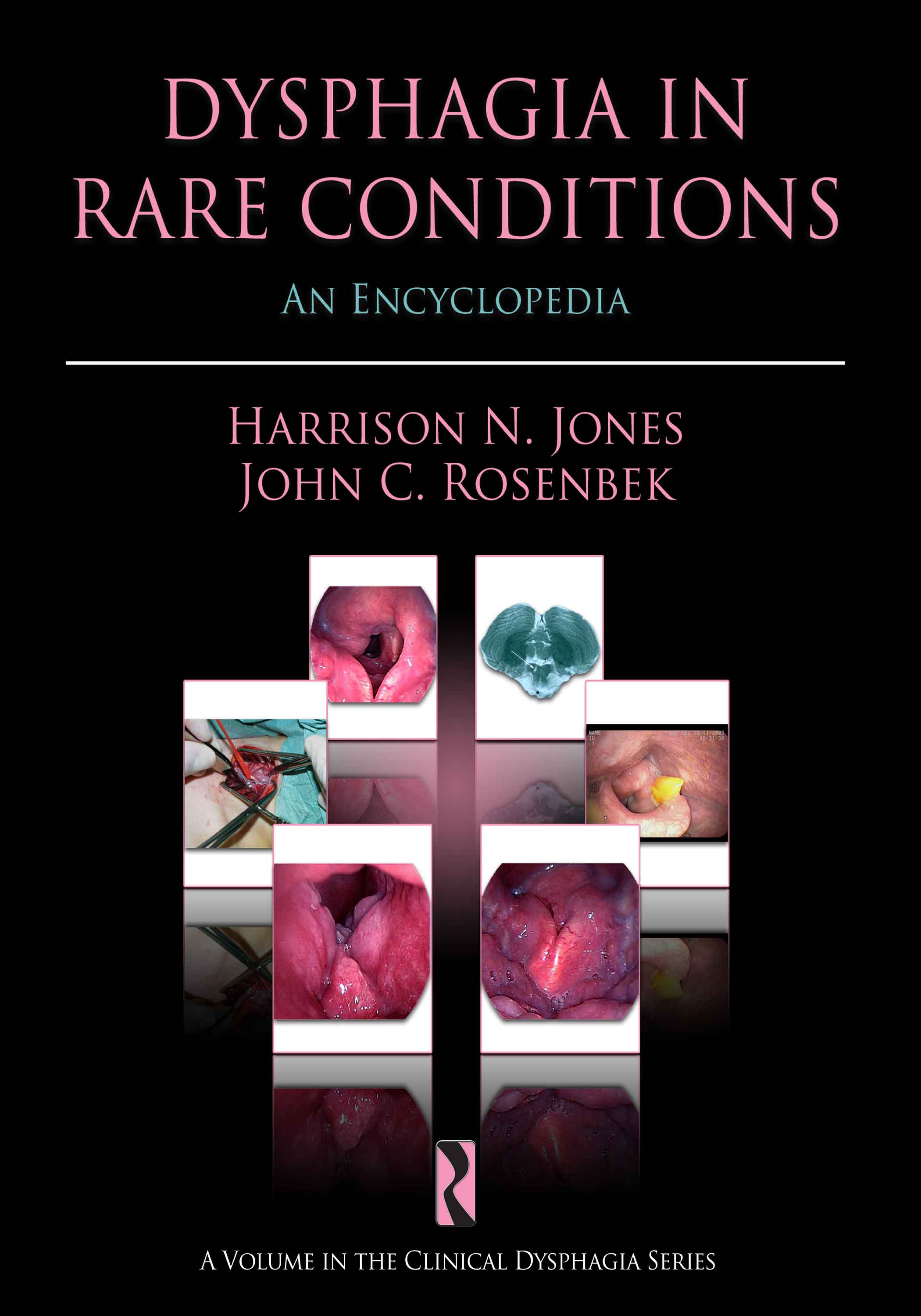
Dysphagia in Rare Conditions: An Encyclopedia
First Edition
Harrison Jones, John C. Rosenbek
Details: 736 pages, Full Color, eBook
ISBN13: 978-1-59756-747-3
© 2010 | Available
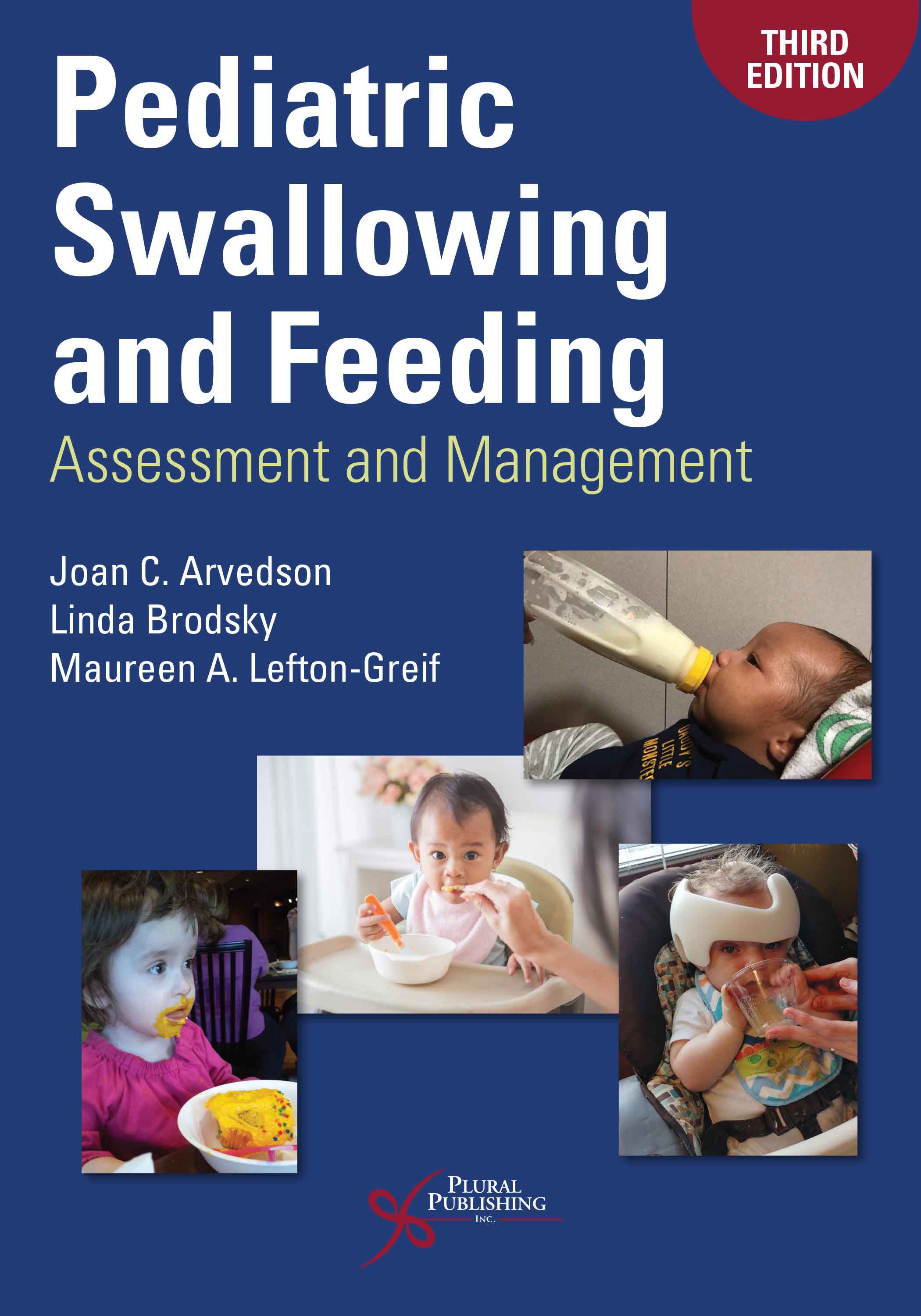
Pediatric Swallowing and Feeding: Assessment and Management
Third Edition
Joan C. Arvedson, Linda Brodsky, Maureen A. Lefton-Greif
Details: 602 pages, B&W, Softcover, 7" x 10"
ISBN13: 978-1-94488-351-5
© 2020 | Available
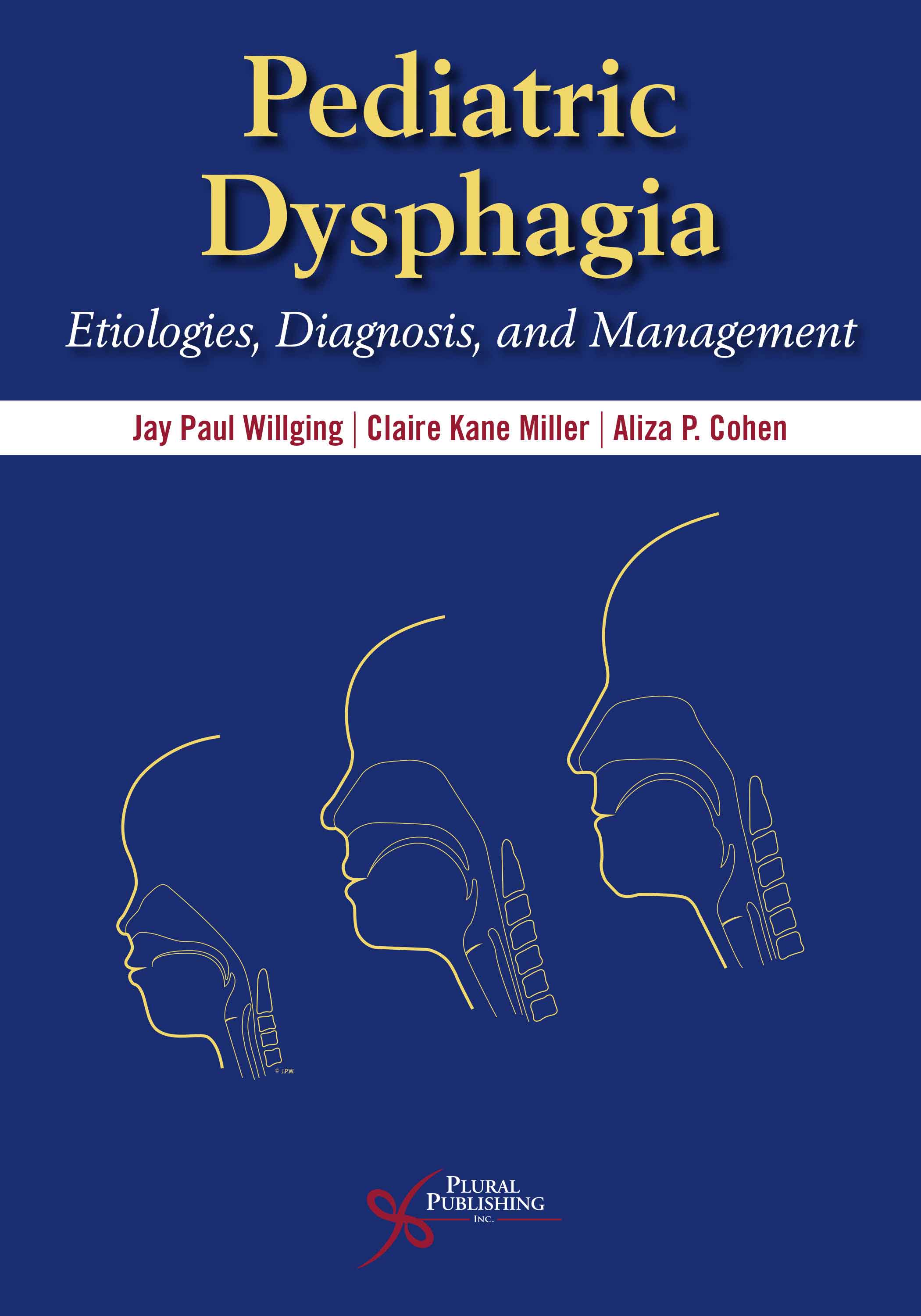
Pediatric Dysphagia: Etiologies, Diagnosis, and Management
First Edition
Jay Paul Willging, Claire Kane Miller, Aliza P. Cohen
Details: 720 pages, Full Color, Hardcover, 7" x 10"
ISBN13: 978-1-59756-864-7
© 2020 | Available
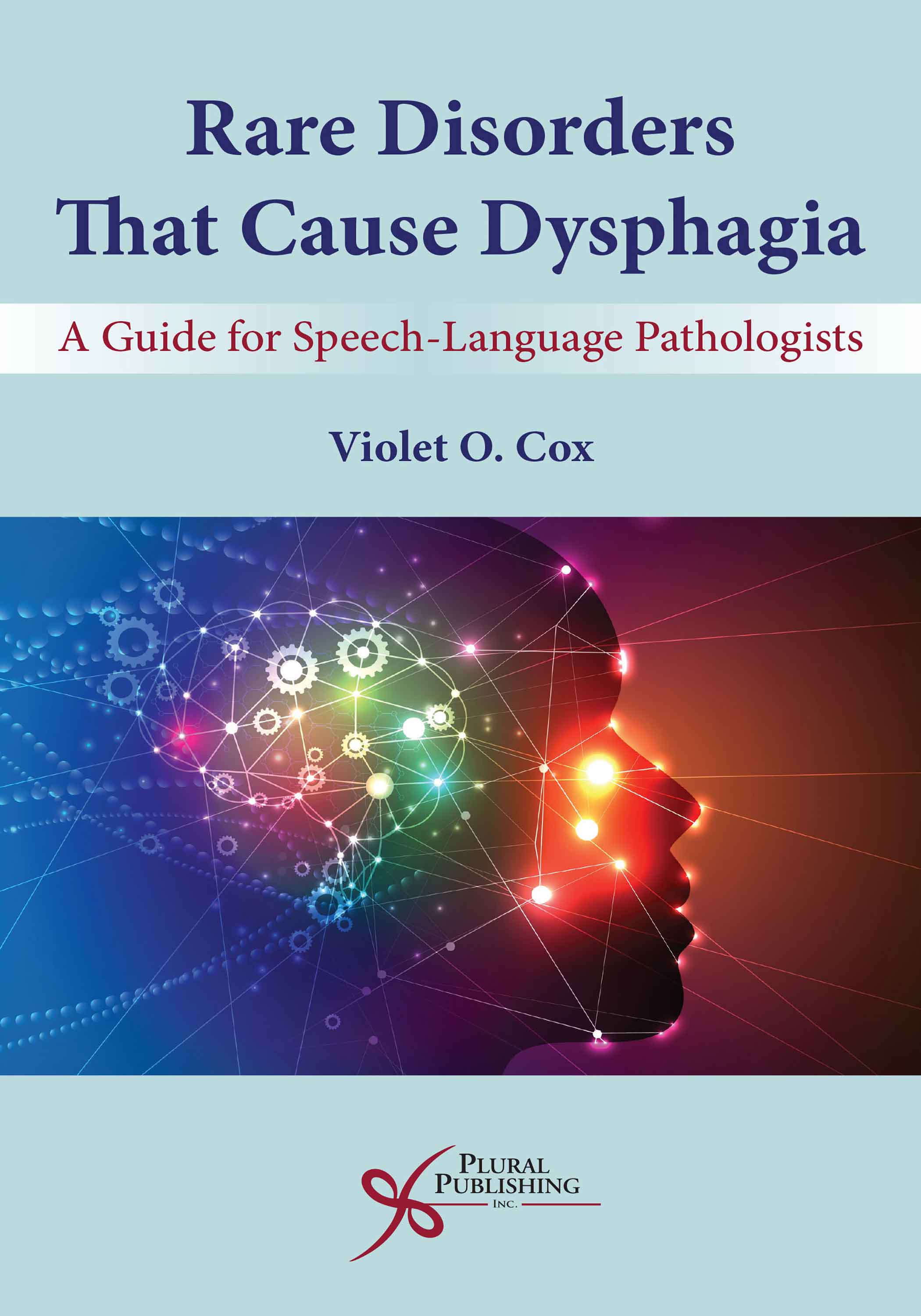
Rare Disorders that Cause Dysphagia: A Guide for Speech-Language Pathologists
First Edition
Violet O. Cox
Details: 217 pages, B&W, Softcover, 6" x 9"
ISBN13: 978-1-63550-142-1
© 2020 | Available


